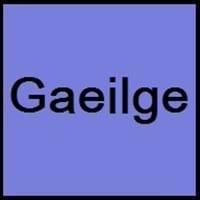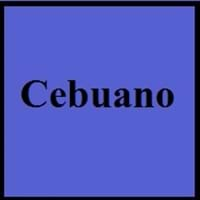Irish and Cebuano
Countries
European Union, Ireland
Philippines
National Language
Ireland
Philippines
Second Language
Ireland
Philippines
Speaking Continents
Europe
Asia
Minority Language
United Kingdom
Not spoken in any of the countries
Regulated By
Foras na Gaeilge
Visayan Academy of Arts and Letters
Interesting Facts
- In Irish language, there are no exact words for "yes" or "no".
- There are different set of numbers for counting humans and another set for counting non-humans in Irish Language.
- About one-fifth of the population of the philippines speak cebuano and are second largest ethnolinguistic group in the country.
- Cebuano contains many words of Spanish origin.
Similar To
Not Available
Hiligaynon Language
Derived From
Not Available
Island of Cebu
Alphabets in
Irish-Alphabets.jpg#200
Cebuano-Alphabets.jpg#200
Writing Direction
Left-To-Right, Horizontal
Not Available
Thank You
Go raibh maith agat
Salamat
How Are You?
Conas atá tú ?
Kumusta man ka?
Good Night
Oíche mhaith
Maayong Gabii
Good Evening
Tráthnóna maith duit
Maayong Gabii
Good Afternoon
Tráthnóna maith duit
Maayong Hapon
Good Morning
Dia dhuit ar maidin
Maayong Buntag
Please
le do thoil
Palihug
Sorry
Tá brón orm
Ikasubo ko
I Love You
Is breá liom thú
Gihigugma ko ikaw
Excuse Me
Gabh mo leithscéal
Ekskyus mi
Dialect 1
Connacht Irish
Boholano
Where They Speak
Connacht
Bohol
Dialect 2
Munster Irish
Southern Kana
Where They Speak
Munster
southern Leyte
Dialect 3
Ulster Irish
North Kana
Where They Speak
Ulster
northern part of Leyte
How Many People Speak?
Not Available
Speaking Population
Not Available
Native Name
Gaeilge (na hÉireann) / An Ghaeilge
Visayan
Alternative Names
Erse, Gaeilge, Gaelic Irish
Binisaya, Bisayan, Sebuano, Sugbuanon, Sugbuhanon, Visayan
French Name
irlandais moyen
cebuano
German Name
Mittelirisch
Cebuano
Pronunciation
[ˈɡeːlʲɟə]
Not Available
Ethnicity
Irish people
Cebuano people
Origin
c. 750
16th century
Language Family
Indo-European Family
Austronesian Family
Subgroup
Celtic
Not Available
Branch
Goidelic
Not Available
Early Forms
Primitive Irish, Old Irish, Middle Irish, Classical Irish, Irish
No early forms
Standard Forms
An Caighdeán Oifigiúil
Standard Cebuano
Language Position
Not Available
Signed Forms
Irish Sign Language
Not Available
Scope
Individual
Individual
ISO 639 1
ga
No data Available
ISO 639 6
Not Available
Not Available
Glottocode
iris1253
cebu1242
Linguasphere
50-AAA
No data Available
Language Type
Living
Living
Language Linguistic Typology
Verb-Subject-Object
Verb-Subject-Object
Language Morphological Typology
Fusional
Not Available
All Irish and Cebuano Dialects
Most languages have dialects where each dialect differ from other dialect with respect to grammar and vocabulary. Here you will get to know all Irish and Cebuano dialects. Various dialects of Irish and Cebuano language differ in their pronunciations and words. Dialects of Irish are spoken in different Irish Speaking Countries whereas Cebuano Dialects are spoken in different Cebuano speaking countries. Also the number of people speaking Irish vs Cebuano Dialects varies from few thousands to many millions. Some of the Irish dialects include: Connacht Irish, Munster Irish. Cebuano dialects include: Boholano , Southern Kana. Also learn about dialects in South American Languages and North American Languages.
Irish and Cebuano Speaking population
Irish and Cebuano speaking population is one of the factors based on which Irish and Cebuano languages can be compared. The total count of Irish and Cebuano Speaking population in percentage is also given. The percentage of people speaking Irish language is Not Available whereas the percentage of people speaking Cebuano language is 0.32 %. When we compare the speaking population of any two languages we get to know which of two languages is more popular. Find more details about how many people speak Irish and Cebuano on Irish vs Cebuano where you will get native speakers, speaking population in percentage and native names.
Irish and Cebuano Language Codes
Irish and Cebuano language codes are used in those applications where using language names are tedious. Irish and Cebuano Language Codes include all the international language codes, glottocodes and linguasphere.





